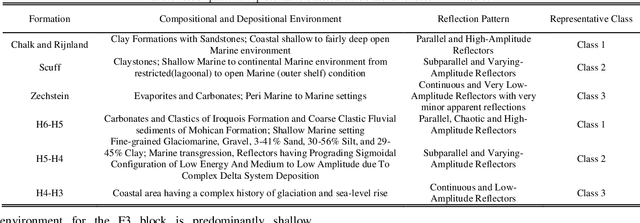Seismic Facies Analysis: A Deep Domain Adaptation Approach
Paper and Code
Nov 20, 2020



Deep neural networks (DNNs) can learn accurately from large quantities of labeled input data, but DNNs sometimes fail to generalize to test data sampled from different input distributions. Unsupervised Deep Domain Adaptation (DDA) proves useful when no input labels are available, and distribution shifts are observed in the target domain (TD). Experiments are performed on seismic images of the F3 block 3D dataset from offshore Netherlands (source domain; SD) and Penobscot 3D survey data from Canada (target domain; TD). Three geological classes from SD and TD that have similar reflection patterns are considered. In the present study, an improved deep neural network architecture named EarthAdaptNet (EAN) is proposed to semantically segment the seismic images. We specifically use a transposed residual unit to replace the traditional dilated convolution in the decoder block. The EAN achieved a pixel-level accuracy >84% and an accuracy of ~70% for the minority classes, showing improved performance compared to existing architectures. In addition, we introduced the CORAL (Correlation Alignment) method to the EAN to create an unsupervised deep domain adaptation network (EAN-DDA) for the classification of seismic reflections fromF3 and Penobscot. Maximum class accuracy achieved was ~99% for class 2 of Penobscot with >50% overall accuracy. Taken together, EAN-DDA has the potential to classify target domain seismic facies classes with high accuracy.
 Add to Chrome
Add to Chrome Add to Firefox
Add to Firefox Add to Edge
Add to Edge